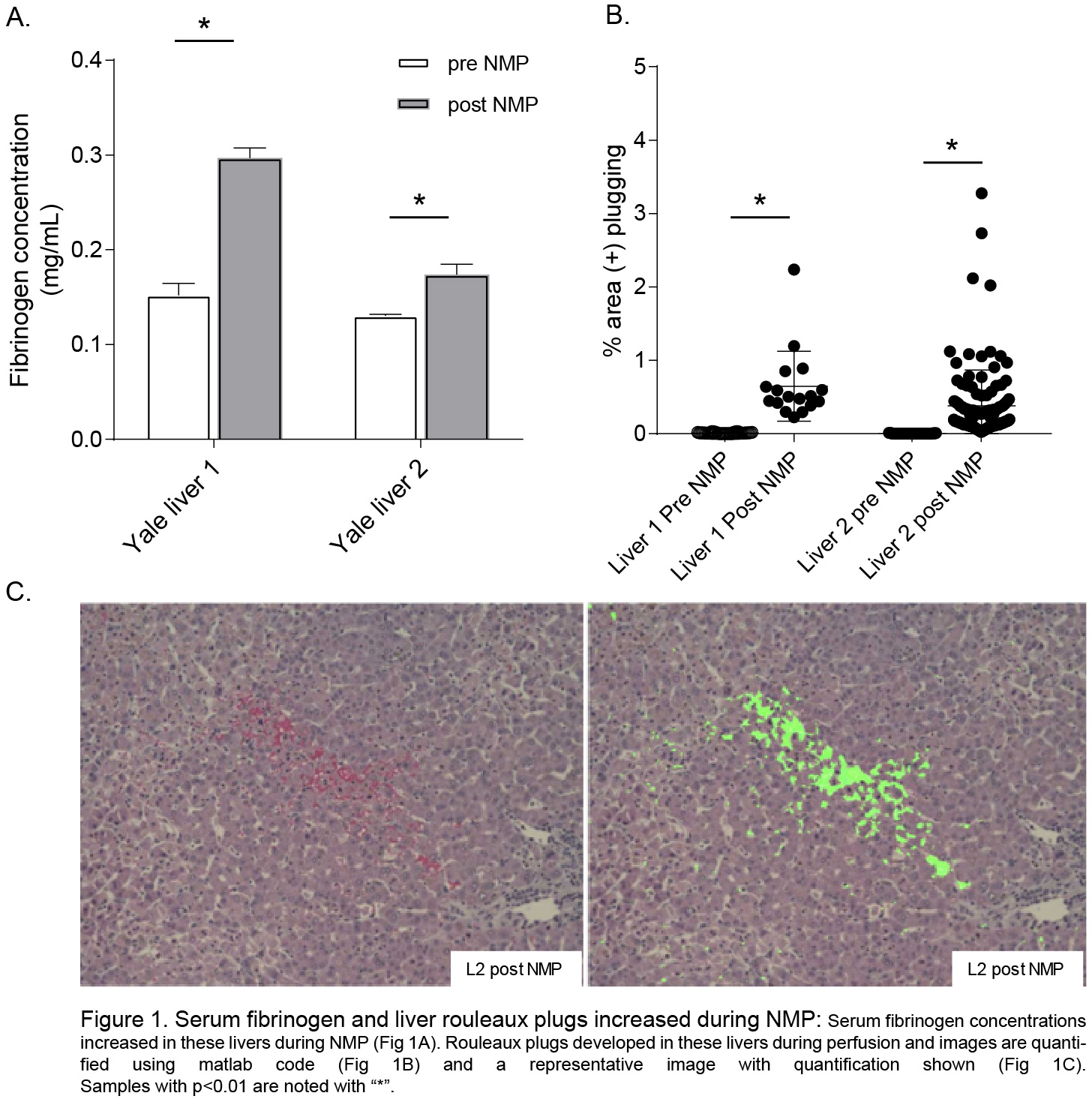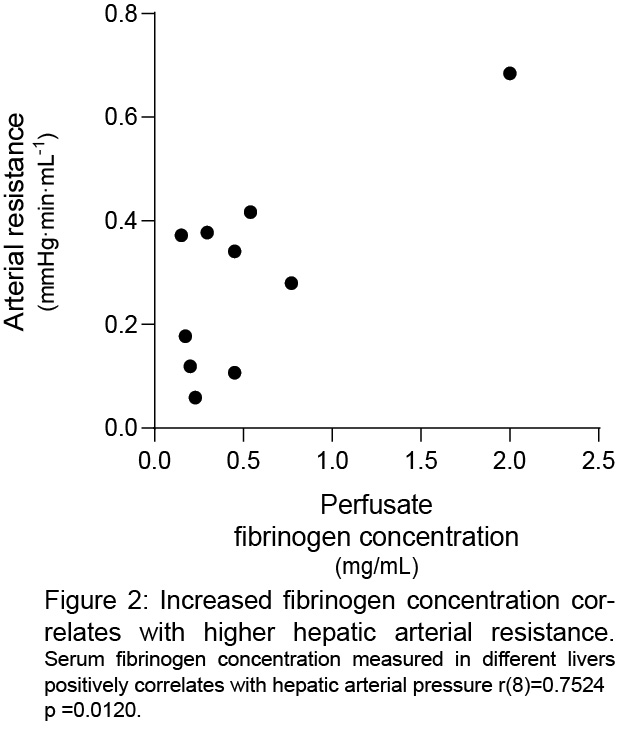Rouleaux Formation in Human Livers During Normothermic Machine Perfusion
1Division of Transplantation, Yale New Haven Hospital, Yale School of Medicine, New Haven, CT, 2Division of Transplant Surgery, Massachusetts General Hospital, Harvard Medical School, Boston, MA, 3Yale School of Engineering and Applied Science, New Haven, CT, 4Surgery, Division of Transplantation, Yale New Haven Hospital, Yale School of Medicine, New Haven, CT
Meeting: 2020 American Transplant Congress
Abstract number: C-355
Keywords: Ischemia, Liver, Liver preservation, Machine preservation
Session Information
Session Name: Poster Session C: Ischemia Reperfusion & Organ Rehabilitation
Session Type: Poster Session
Date: Saturday, May 30, 2020
Session Time: 3:15pm-4:00pm
 Presentation Time: 3:30pm-4:00pm
Presentation Time: 3:30pm-4:00pm
Location: Virtual
*Purpose: We recently discovered that red blood cells form rouleaux plugs in human kidney vasculature during normothermic machine perfusion (NMP) and are associated with poor perfusion (DiRito et al, manuscript in review). Since in-vivo, rouleaux formation is typically mediated by hepatic fibrinogen, we sought to determine if fibrinogen release is associated with rouleaux plug formation during NMP of human livers.
*Methods: Transplant-declined human livers underwent NMP on the OrganOx or LiverAssist perfusion devices. Perfusate was collected prior to perfusion and after 2-4 hours of NMP. Wedge or core needle biopsies were H&E stained and imaged at 20x magnification. After qualitative analysis, rouleaux plugs were identified and quantified using custom Matlab code that relies on user defined training images to characterize positive and negative features in each organ. Serum fibrinogen concentration was analyzed prior to and after initiation of NMP.
*Results: Serum fibrinogen concentrations varied between livers, but most serum fibrinogen concentrations increased during perfusion. Increased levels of fibrinogen seem to correlate with increased levels of rouleaux and vascular plugging as identified by quantitative analysis of biopsies (Fig.1 A&B). Representative images of an H&E stained liver biopsy from after NMP demonstrates rouleaux plugs and they are identified by the image analysis Matlab code (Fig. 1C). Across all livers, increasing levels of perfusate fibrinogen were positively correlated with hepatic arterial resistance (Fig 2).
*Conclusions: Vascular plugs occur during NMP of livers and fibrinogen concentration in perfusate increases in most liver perfusions over time. These levels may provide a marker of viability and further elucidation of these pathways could lead to treatments to rescue injured grafts for transplant.
To cite this abstract in AMA style:
Harris M, Raigani S, Albert C, Reschke M, Carroll C, Langford JT, Edwards C, Mulligan D, Haakinson D, Uygun K, Yeh H, Tietjen G. Rouleaux Formation in Human Livers During Normothermic Machine Perfusion [abstract]. Am J Transplant. 2020; 20 (suppl 3). https://atcmeetingabstracts.com/abstract/rouleaux-formation-in-human-livers-during-normothermic-machine-perfusion/. Accessed December 14, 2025.« Back to 2020 American Transplant Congress


